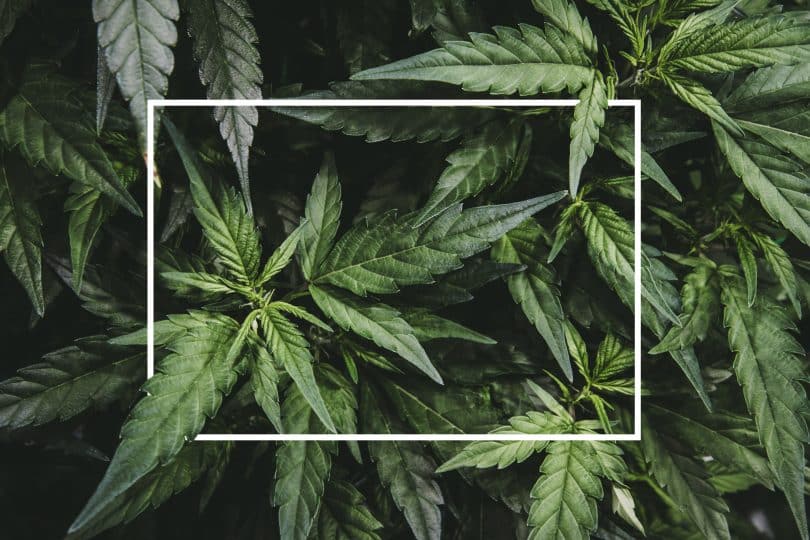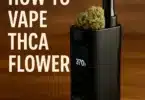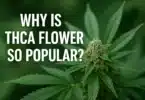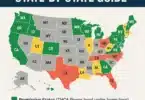Dr. Andrew Huberman, a professor of neurobiology at the Stanford School of Medicine, hosts a popular YouTube podcast in which he discusses a range of topics based on the latest scientific evidence. On a recent podcast, he delved into the biology of cannabis, breaking down various aspects of cannabis and cannabinoids including how the plant’s compounds affect the brain and body.
Cannabis and Psychoactive Compounds
Dr. Huberman begins the podcast by discussing the psychoactive compounds found in cannabis. He points out that there are more than 70 of these compounds in the plant, most of which are not studied, meaning very little is known about their functions and mechanisms. The most well-known compounds include delta-9-tetrahydrocannabinol or THC and cannabidiol or CBD. Another important compound is cannabinol or CBN. Each of these compounds is a biologically active agent, meaning they have specific actions on the body and brain, which can be either positive or negative.
THC is the compound largely responsible for the psychoactive properties of cannabis, resulting in changes in mood, perception and sensation, more commonly known as “getting high.” Likewise, CBD and CBN have profound effects on the brain and body, but don’t cause the same changes in mood, perception and sensation that THC does. However, CBD does play a role in the “high” created by THC. On top, the cannabis plant has more than 400 biologically active compounds, some of which may or may not have psychoactive properties, and may or may not have medicinal applications. In short, there are vast opportunities for further study of the cannabis plant.
Understanding Different Cannabis Strains
Dr. Huberman divides the effects of cannabis on the body according to the strains: sativa v indica v ruderalis. The traditional understanding of the differences between sativa and indica is based on the plant’s structure and effects. Sativa is known as a tall plant with large fan leaves, while indica is a short and stout plant with smaller leaves. To activate the psychoactive properties of cannabis, the dried leaves are heated. The traditional way to achieve this is via smoking. When cannabis is smoked, the compounds enter the lungs, interacting with the vasculature of the lungs i.e. blood vessels and capillaries, where they’re absorbed into the bloodstream, and cross the blood-brain barrier.
When activated in this way, sativa strains act as a stimulant, making people feel more alert with a heightened sense of focus and/or creativity. Though effects vary from one individual to the next, in general, sativa varieties are said to produce head-based effects. By contrast, indica strains tend to have more effects on the body, acting as a sedative that creates feelings of relaxation. As a result, indica strains are sometimes used to aid sleep and relieve anxiety.
It’s important to note that these strains of the cannabis plant are traditional categories that have mostly been bred out due to modern-day cross breeding, but they remain in use as convenient ways to discuss the effects of cannabis. Most plants today are hybrids, meaning the plant may contain varying ratios of sativa and indica. These new strains are typically divided into type one, type two and type three. Type one hybrid strains are typically high in THC; type two hybrid strains have equal ratios of THC to CBD, and type three strains are typically higher in CBD. These new strains have been created specifically to produce nuanced effects on the brain and body.
Endogenous V Exogenous Cannabinoids

The two main endogenous cannabinoids are anandamide (AEA) and 2-arachidonyl glycerol (2-AG). They are released from nerve cells, which contain presynaptic neurons and postsynaptic neurons. Presynaptic neurons contain bundles of neurotransmitters or chemicals. When stimulated (by a thought, desire to move, hunger, etc.), the relevant neurotransmitters are released to fuse with cells in a gap (synaptic cleft) in between the pre- and postsynaptic neurons, and park in receptors on the postsynaptic neuron side.
The key thing to know about endogenous cannabinoids is that they’re released from the postsynaptic side, and in this instance, the neurotransmitters or chemicals work backwards, or in retrograde, affecting the presynaptic nerve, changing their ability to release further chemicals. Retrograde action leads to activation or suppression of activity in various neurons There are two kinds of receptors available to endogenous cannabinoids: CB1, found in brain and nervous system, and CB2, found in tissues including the immune system, liver and genitals.
Due to the widespread location of receptors throughout the body, cannabinoids affect many physiological functions. It’s important to make a distinction between the action of endogenous cannabinoids and exogenous cannabinoids such as THC and CBD. When exogenous cannabinoids park in receptors, they are stronger than endogenous cannabinoids, in effect overriding the body’s system, to the point of shutting it down. In other words, in some cases, they can cause a dysfunction in the endocannabinoid system.
The Biological Effects of Cannabis
Cannabinoids enter the bloodstream quickly, and can cross into the brain and permeate the body in less than 30 seconds, which is faster than alcohol or nicotine. It reaches its peak effect within 30 to 60 minutes. The duration of the effects are typically 3 hours but can vary widely. Cannabinoids are highly lipophilic, meaning they are fat-soluble. Each cell in the body has a fatty membrane that acts as a barrier for protection, which cannabinoids can easily penetrate. They can remain in the cell for up to 80 days. The familiar effects of cannabis are mostly due to the effect of cannabinoids, such as THC and CBD, on CB1 receptors in the brain.
However, because CB1 receptors are found all over the brain, and because of the retrograde action of cannabinoids, they can produce different effects on different parts of the brain. For example, sativa strains are known to increase focus, which occurs due to activation of the CB1 receptors in the prefrontal cortex. But the prefrontal cortex acts a modulator of the limbic circuitry, which is attuned to stress, and includes the amygdala. The default of the limbic system is to detect danger, and the prefrontal cortex regulates the system by acting as a break on it. So while a sativa variety is increasing activity in the prefrontal cortex, it’s also decreasing activity in the limbic system, with the effect of reducing stress.
What’s happening here is a sort of seesaw affect where the same compounds are causing an increase in activity in one area of the brain and a decrease in another. There is no way to predict how a particular strain will affect an individual but what is known is that cannabis will intensify an individual’s pre-existing condition, state or mood. So if a person is prone to anxiety, cannabis is likely to exacerbate that anxiety.
We appreciate you joining us. Sign up for the Cannadelics Weekly Newsletter to get updates direct to your email; and for sweet offers on cannabis flowers, vapes, edibles, smoking equipment, cannabinoid compounds, and even some psychedelics. Everyone get stoned responsibly!
Dr. Huberman offers a summary of the biological effects of cannabis on various parts of the brain and body:
| Brain / Body Part | Biological Effect |
| Hippocampus | Suppression of hippocampus leads to negative effects on short-term memory, in particular indica strains |
| Prefrontal cortex | Sativa act as stimulant, increases creativity and focus whereas indica depresses prefrontal cortex resulting in a relaxing effect that promotes sleep |
| Basal ganglia and cerebellum | Suppression of circuits in the basal ganglia (action planning or withholding action) and cerebellum (balance and motor sequencing) causing reduced ability to plan or take action |
| Mouth | Reduction of saliva production causing dry mouth |
| Eyes | Causes eyes to redden or produce water |
| Hypothalamus | Activates neurons that stimulate appetite resulting in “munchies” |
| Blood Sugar | THC and CBD have strong effect on blood sugar resulting in an increase in appetite |
| Spinal cord | Presence of CB1 receptors in spinal cord results in pain relief |
| Prolactin: Hormone produced by pituitary gland to promote milk production in pregnant women | Leads to increase in prolactin, can cause enlarged breasts or gynaecomastia in men |
FINAL THOUGHTS
Dr. Huberman makes it clear there’s no way to know in advance of consuming cannabis what effect it will have on a specific individual. The important take-away here is to consider the context in which cannabis is being consumed by asking questions in relation to your current environment and reasons for consuming cannabis. What I covered in this article is taken from the first hour of this two and a half hour-long podcast. Dr. Huberman goes on to describe further biological effects of cannabis, including the links between cannabis and hormones, the effects of long-term use, and the people for whom cannabis use is not advisable. If you’d like to hear what else Dr. Huberman has to say on cannabis, you can watch here:
Hello readers! We appreciate you stopping by Cannadelics.com; an independent news platform that specializes in cannabis and psychedelics reporting. Stop by regularly to stay informed on all happenings, and subscribe to the Cannadelics Weekly Newsletter, to ensure you’re never late to get the news.








While I am not against cannabis use for adults, I am for people under the age of 25. If you were to have listened to the entire podcast, you would have heard about deleterious effects of high potency THC on the “adolescent brain”. You would have heard about high potency THC and addiction or Cannabis Use Disorder. You would have heard about the recent findings on cannabis and anxiety. My son developed cannabis induced psychosis at the age of 18 from ingesting high potency THC weed. His psychosis was so debilitating he began to try to escape his mind using other heavier drugs. He died of an accidental overdose at the age of 22. This tragedy is playing out all over the United States. There needs to be regulation with respect to percent THC. But money rules.